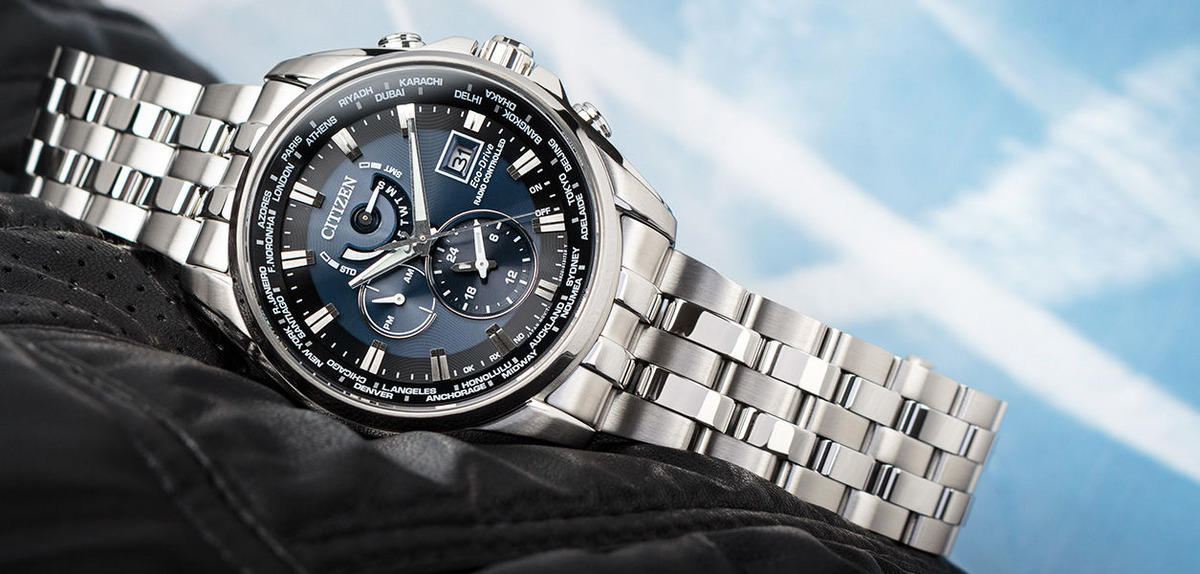Watch Movements – What You Should Know and How to Choose the Right One
Why Watch Movements Matter
While the design of a watch often catches the eye first, its movement—the mechanism that powers the timekeeping—is what truly defines its functionality and longevity. Understanding the various types of movements can help you make an informed decision, whether you’re purchasing for yourself or selecting a watch as a gift.
Quartz Movement
Quartz watches are powered by a battery and use a quartz crystal to keep time. This mechanism is highly accurate and requires minimal maintenance, making it ideal for everyday wear.
How It Works
- A battery sends an electric current through a quartz crystal, causing it to vibrate 32,768 times per second.
- These vibrations regulate the movement of the watch hands or digital display.
- Quartz watches boast precision, with an average deviation of just 20 seconds per month.
Advantages
- Affordable and widely available.
- Minimal maintenance required (battery replacement every 1-3 years).
- Highly accurate.
Automatic Movement
Automatic watches, also known as self-winding watches, harness the motion of the wearer’s wrist to power the movement.
How It Works
- A rotor spins as the watch moves on your wrist, winding the mainspring.
- The stored energy in the mainspring powers the gears, which move the watch hands.
- Automatic watches often include a power reserve, which allows the watch to continue running for 24-48 hours without being worn.
Advantages
- Does not require a battery.
- Durable with proper maintenance.
- A classic choice for watch enthusiasts.
Considerations
- Requires regular wear or the use of a watch winder to maintain accuracy.
- Slightly less accurate than quartz movements.
Mechanical Movement
Mechanical watches rely on intricate, hand-assembled gears and springs to operate. These timepieces are considered the epitome of traditional watchmaking craftsmanship.
How It Works
- The mainspring is manually wound using the watch’s crown.
- The stored energy in the mainspring powers the intricate network of gears.
- Known for their distinctive sweeping second hand, as opposed to the ticking motion of quartz watches.
Advantages
- Exceptional craftsmanship and often viewed as collector’s items.
- No reliance on batteries or electricity.
- Timeless appeal with a vintage charm.
Considerations
- Requires regular winding.
- More sensitive to environmental conditions like temperature and shock.
- Typically more expensive due to the complexity of manufacturing.
Choosing the Right Movement
When selecting a watch, consider the following:
- Lifestyle: For everyday convenience, opt for quartz. For a luxurious feel, consider automatic or mechanical.
- Maintenance: Quartz requires the least upkeep, while mechanical watches need regular winding and servicing.
- Budget: Quartz watches are generally more affordable, while mechanical and automatic options can be a long-term investment.
- Style: Mechanical watches often have a timeless appeal, while quartz and automatic models offer versatility.
Conclusion
Understanding watch movements helps you appreciate the engineering behind timepieces and make an informed choice. Whether you value precision, craftsmanship, or a blend of both, there’s a movement suited to your needs. Explore high-quality watches with diverse mechanisms to find the perfect fit for your wrist or a thoughtful gift for someone special.
See popular articles

Dlaczego zmieniamy czas na zimowy w zegarkach? Tłumaczymy mechanizm i historię zmiany czasu
Dwa razy w roku cofamy lub przesuwamy wskazówki zegara, ale rzadko zastanawiasz się, po co właściwie jest zmiana czasu i dlaczego wciąż jej przestrzegamy. To nie tylko kwestia tradycji – za tym zwyczajem stoi historia, decyzje polityczne i próba lepszego wykorzystania światła dziennego. Sprawdź, jak działa mechanizm przestawienia czasu, skąd się wziął i jakie ma znaczenie dziś.

Zegarki solarne - ranking ciekawych modeli i wszystko co warto wiedzieć przed zakupem
Zegarki solarne to nowoczesne połączenie stylu i praktyczności – zasilane światłem, niezawodne i przyjazne środowisku. Dzięki wbudowanym panelom solarnym nie wymagają regularnej wymiany baterii, co czyni je wyjątkowo wygodnymi w codziennym użytkowaniu i bardziej ekologicznymi. W naszym rankingu znajdziesz modele, które wyróżniają się nie tylko atrakcyjnym designem, ale również bogatą funkcjonalnością i imponującą trwałością, idealne dla wymagających użytkowników poszukujących zegarka na lata.

Jak zmienić czas na zimowy w Casio G Shock?
Zmiana czasu potrafi zamieszać – nie tylko w głowie, ale i na nadgarstku. Jeśli nosisz G-Shocka i chcesz szybko przestawić go na czas zimowy, nie musisz zagłębiać się w instrukcje ani zgadywać, który przycisk za co odpowiada. W tym poradniku znajdziesz konkretne wskazówki, proste kroki i sprawdzone triki, które pomogą Ci bez nerwów ustawić zegarek Casio G-Shock – niezależnie od modelu, który masz.

Jak dobrać biżuterię do zegarka? Zasady, inspiracje i gotowe triki stylizacyjne
Dobranie biżuterii do zegarka to nie tylko kwestia gustu, ale przede wszystkim umiejętność stworzenia spójnej, stylowej całości. Zegarek może być subtelnym tłem dla dodatków albo główną ozdobą, wokół której budujesz cały look. Sprawdź, jak łączyć metale, wybierać bransoletki i tworzyć zestawienia, które zawsze wyglądają elegancko i nowocześnie.

Jaki zegarek na 40 urodziny wybrać? TOP 5 wyborów
Czterdzieste urodziny to wyjątkowy moment – symboliczny etap życia, w którym zegarek może stać się nie tylko praktycznym dodatkiem, ale także wyrazem stylu, statusu i osobowości. Zegarek na 40 urodziny powinien podkreślać dojrzały gust, elegancję oraz indywidualność obdarowanego – kluczowe znaczenie ma jakość, prestiż marki oraz funkcjonalność dopasowana do codziennych aktywności Poniżej przedstawiamy TOP 5 zegarków męskich na 40 urodziny dostępnych w ofercie sklepu WestWatches – zapraszamy!

Jaki zegarek kupić na dzień chłopaka? TOP 6 propozycji od West Watches
Dzień Chłopaka to świetna okazja, aby podarować coś wyjątkowego – prezent, który będzie nie tylko praktyczny, ale i symboliczny. Zegarek to zawsze trafiony wybór – elegancki, funkcjonalny i trwały. Ważne jednak, by dopasować go do stylu oraz trybu życia obdarowywanego. Czy woli klasyczną elegancję, sportowy look, a może nowoczesne technologie? Poniżej znajdziesz sześć propozycji z oferty WestWatches.pl, które sprawdzą się jako idealny prezent.

Czym jest bezel zegarka? Wyjaśniamy jego zastosowanie i zalety
Bezel to detal, który często umyka uwadze, a w rzeczywistości decyduje o funkcjonalności, stylu i bezpieczeństwie zegarka. To właśnie ten pierścień sprawia, że czasomierz staje się czymś więcej niż tylko ozdobą na nadgarstku. Dowiedz się, co to jest bezel w zegarku, jak działa i do czego możesz go wykorzystać na co dzień.

Tachometr - co to jest i jaką funkcję pełni w zegarku?
Tachometr w zegarku to coś więcej niż ozdobna skala na tarczy – to praktyczne narzędzie, które pozwala w kilka sekund obliczyć średnią prędkość na wybranym dystansie. Choć dziś korzystasz z GPS-u, ta klasyczna funkcja nadal ma swój urok i znaczenie, łącząc precyzję z historią zegarmistrzostwa.

Bransoleta mesh - czym jest i do jakich stylizacji pasuje?
Jeśli szukasz dodatku, który połączy wygodę codziennego noszenia z elegancją biżuterii, bransoleta mesh może być strzałem w dziesiątkę. Ten charakterystyczny, mediolański splot od lat zdobywa uznanie zarówno wśród miłośników klasycznych zegarków, jak i fanów nowoczesnych smartwatchy. Zanim zdecydujesz się na zakup, sprawdź, co dokładnie oznacza ten typ bransolety, jakie są opinie użytkowników i w jakich stylizacjach sprawdza się najlepiej.











